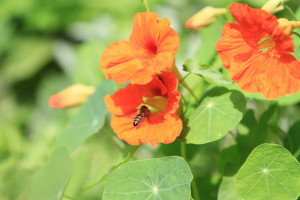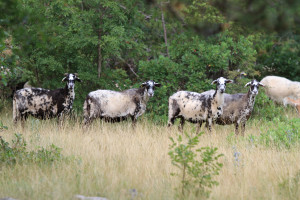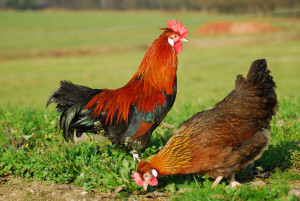List of experts
- Danijela Bojkovski, member of the WG In situ conservation and member of the WG on Ex situ conservation
- Tina Flisar, member of the WG on Documentation and Information and of the WG on Ex situ conservation
Carniolan honeybee (Apis mellifera carnica)
The Carniolan honeybee is a sub-species of the Western honey bee native to Slovenia, where beekeeping is a traditional agricultural activity. Thanks to the bee trade, the Carniolan bee is today the second most widely distributed bee subspecies in the world, after the Italian Apis mellifera ligustica . Its main body characteristic is the grey hair covering their abdomen. The Carniolan bee is known for being calm, hardworking and having an excellent orientation as well as resistant to some diseases and parasites . The main threat to the Carniolan bee is parasitic mites. Carniolan bee is also threatened by intensive plant protection agriculture and climate change.
Photo by V. Rezar
Slovenian sheep
The Istrian sheep breed was raised in the Karst and Istria region, where sheep farming in the past was important due to the landscape limitations for intensive agriculture. The breed was multi – purpose breed, used for lamb production, wool, and milk manufactured into cheese. Sheep production was almost abandoned in the region after world war II which led to the almost extinction of the breed. Today, there are less than a 1,000 sheep registered in the flock book. It is used as a dairy sheep with good production level for an unselected breed (172 kg of milk with 7.1% fat and 5.8% protein) and the production of cheese. Its main breed characteristic is dark spots on its head and torso on a white body.
Photo by V. Rezar
Styrian chicken
In the past, the Styrian hen was spread throughout the Alpine countries from the Danube to the Adriatic Sea and into the Pannonian Plain. Its main breed characteristic is a tuft of feathers behind the ridge and a medium-high, simple and upright ridge. The breed population is estimated to 1,600 hens and it is kept mostly by amateurs, however the Bioechnical Faculty of Ljubljana is also keeping animals and helping the breed’s management. The main production is eggs, with an average production of 130 to 160 eggs per year, with an average weight of 55 grams.
Photo by N. Petrič



